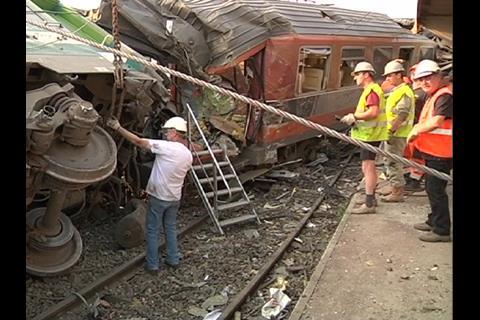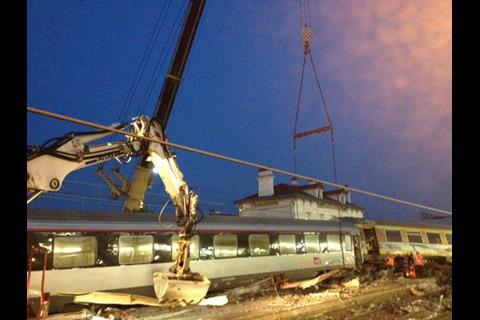FRANCE: On January 10 land transport accident investigation bureau BEA-TT published its interim report on the derailment which had taken place on July 12 2013 at Brétigny-sur-Orge. The last four cars of an SNCF Paris - Limoges inter-city service had left the track when entering the station from the north, killing seven people and injuring a further 32.
BEA-TT says that the derailment was caused by a fishplate obstructing the flangeway of an oblique crossing forming part of a double slip. Under the weight of the train travelling at 137 km/h, the fishplate had pivoted around the first of four bolts meant to hold it in place, the three others having come loose.
The most likely cause of the bolts coming loose, says BEA-TT, were stresses caused by cracking in the cast steel crossing. This had caused the head of the third bolt to break off and the others to fail, one becoming unscrewed and the heads of the other two also sheering off.
BEA-TT makes three recommendations to SNCF which undertakes maintenance on behalf of infrastructure manager RFF. The first is that overall expertise in bolted track joints should be improved, including technical specifications and the quality of components, and that specifications for tightening bolts should be observed during installation and maintenance.
Secondly, regulations specifying measures to be taken when defects are detected should be clarified and reinforced, setting out the maximum timescale allowed for repairs to be undertaken. The final recommendation says that switches and crossings requiring a higher level of maintenance or early renewal should be identified, and that such requirements are considered in 'reliable and auditable' manner when managing maintenance activities.
In a joint statement, SNCF and RFF said that the recommendations of the report would be fully implemented, without waiting for the ongoing judicial investigation into the Brétigny accident to reach its conclusion. The recommendations would enable the safety of the railway system to be improved, they said.























